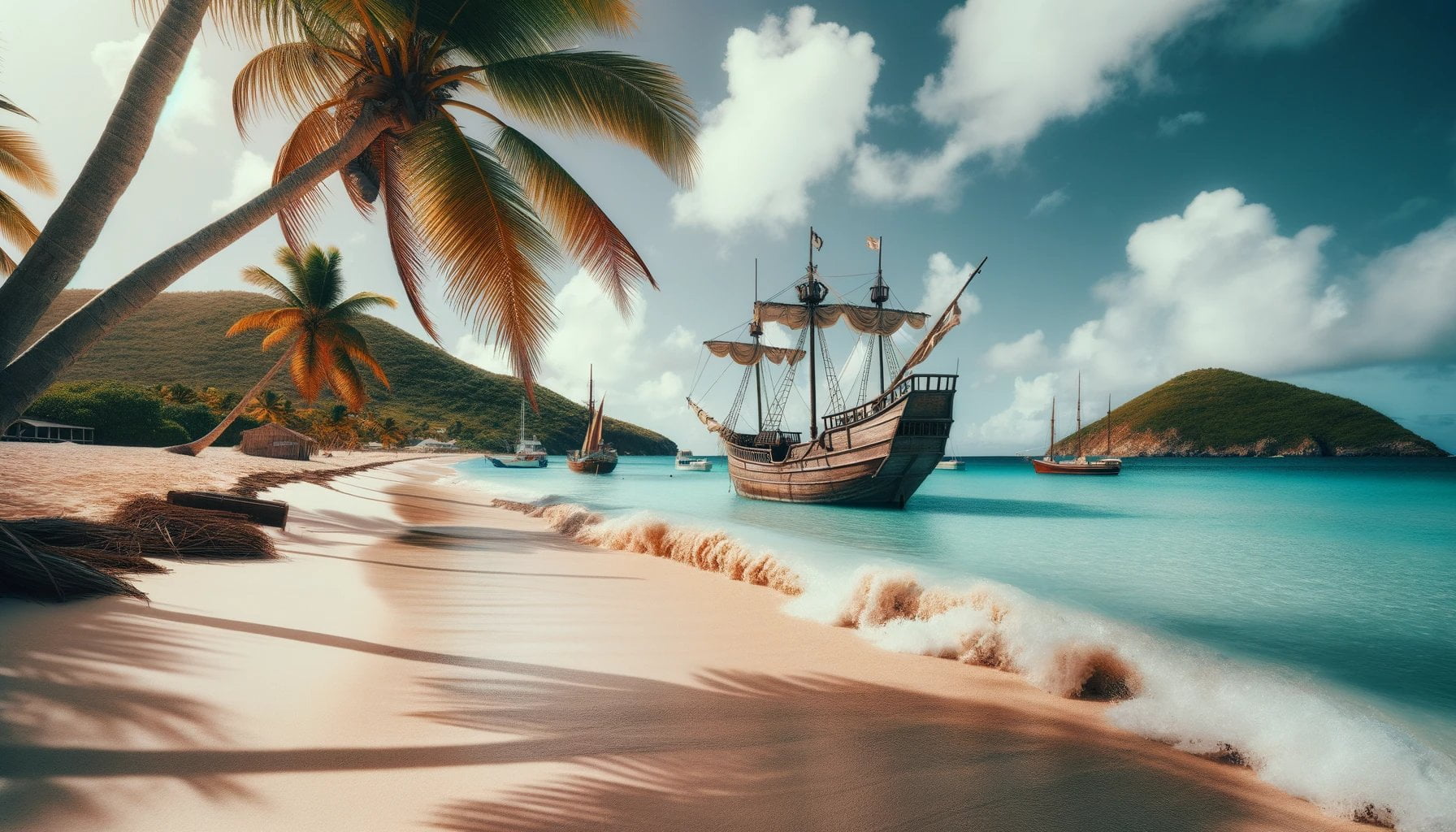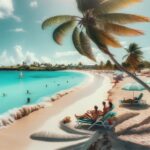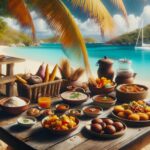Embark on a captivating journey through the historical tapestry of Antigua and Barbuda, as we dive deep into the intricate threads that have shaped these Caribbean islands. From colonization to independence, this article unveils the captivating narrative of Antigua and Barbuda’s rich history. Delve into the key milestones, cultural transformations, and significant personalities that have woven this fascinating tapestry, as we unravel the story of a nation. Join us as we uncover the secrets of Antigua and Barbuda’s past and gain a new appreciation for the legacy that continues to shape its present.
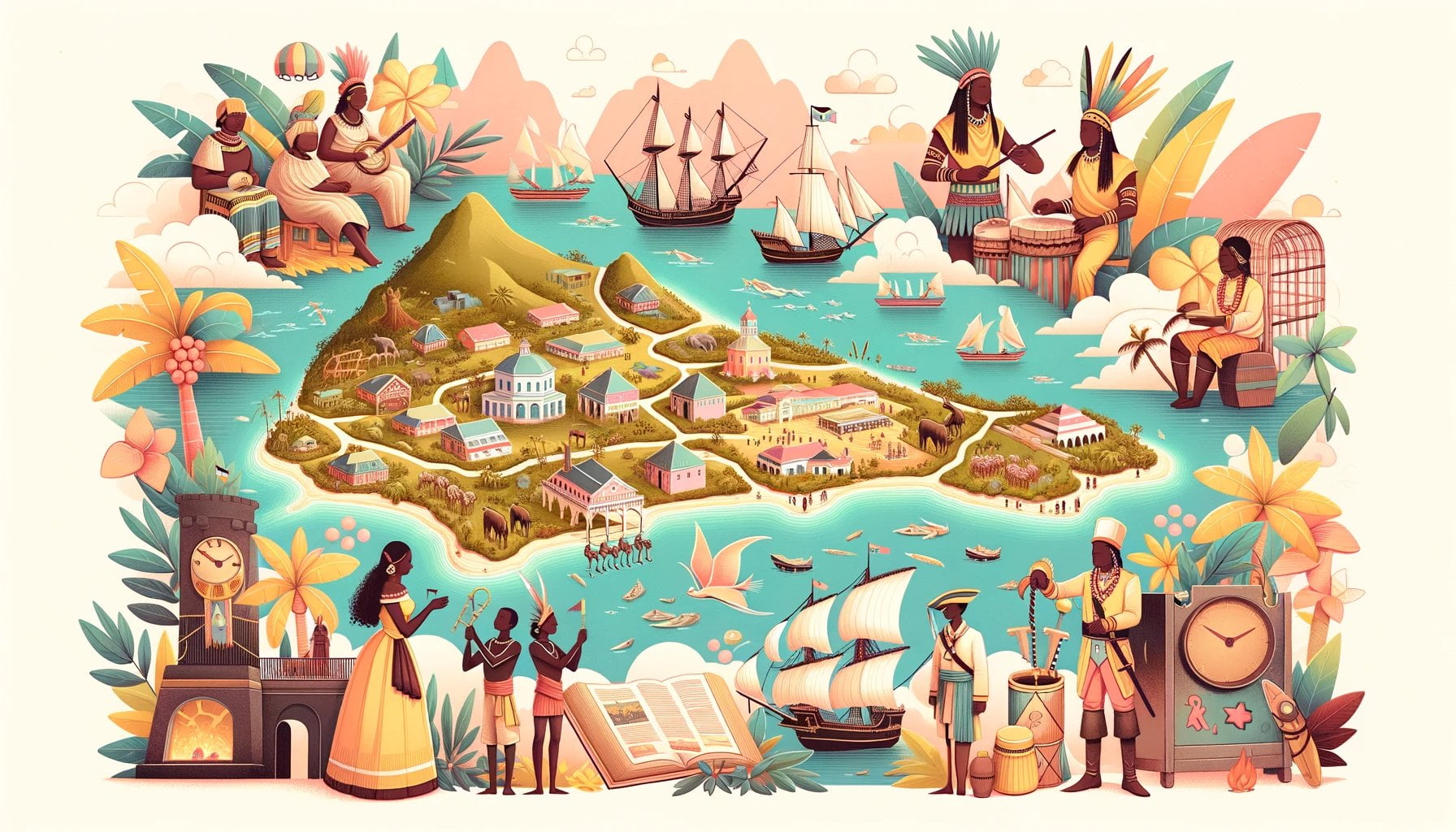
Key Takeaways:
- Antigua and Barbuda is a Caribbean nation that was colonized by the English in the 17th century.
- The islands were named by Christopher Columbus, who visited Antigua in 1493.
- The islands were part of the British colony of the Leeward Islands and the West Indies Federation.
- The islands’ slaves were freed in 1834.
- Antigua and Barbuda became a self-governing state within the British Commonwealth in 1967 and achieved full independence in 1981.
- Antigua was initially settled by pre-agricultural Amerindians known as “Archaic People” around 2900 BC.
- It was later settled by Saladoid people from Venezuela and then by Arawakan speakers.
- Barbuda was colonized by the English in 1678.
- The islands achieved full independence from the United Kingdom in 1981.
Antigua and Barbuda History
The captivating history of Antigua and Barbuda is a journey that takes us back to the early settlement of the islands by pre-agricultural Amerindians known as the “Archaic People” around 2900 BC. These early inhabitants were later followed by the Saladoid people from Venezuela and eventually by the Arawakan speakers. However, the islands received their name in 1493 when Christopher Columbus visited Antigua.
The English took control of Antigua and Barbuda in the 17th century, incorporating them into the British colony of the Leeward Islands. Over the years, the islands played significant roles in the West Indies Federation and the Trans-Atlantic slave trade. It is worth noting that the slaves on the islands were freed in 1834, marking a monumental moment in Antigua and Barbuda’s history.
Fast forward to the 20th century when the islands embarked on a path toward independence. In 1967, Antigua and Barbuda became a self-governing state within the British Commonwealth, and finally, in 1981, they achieved full independence from the United Kingdom. These milestones mark a pivotal period in their history, as the islands became a sovereign nation with their own government, laws, and cultural identity.
To truly unravel the historical tapestry of Antigua and Barbuda, we must delve into the cultural aspects and significant personalities that have shaped the islands over the years. From the indigenous communities that once inhabited the land to the colonial struggles and eventual independence, every aspect of this history contributes to the rich and diverse heritage of Antigua and Barbuda.
One intriguing aspect of Antigua and Barbuda’s history is the colonization process. The English arrival in 1678 left a lasting impact on the islands, bringing significant cultural, social, and economic changes. The establishment of sugar plantations, for example, shaped the islands’ economy while leaving behind a legacy of slavery and its repercussions that lasted for centuries.
Exploring the historical tapestry of Antigua and Barbuda also involves acknowledging the vibrant cultural transformations that have taken place. From the blending of European, African, and indigenous influences to the emergence of unique traditions, music, and food, the islands’ culture reflects the resilience and adaptability of its people.
In conclusion, the history of Antigua and Barbuda is a fascinating and captivating journey through time. One that unravels the complexities of colonization, the fight for freedom, and the vibrant cultural tapestry that defines the islands today. So, let’s embark on this historical voyage together and explore the stories, events, and individuals that have left an indelible mark on Antigua and Barbuda’s history.
Antigua and Barbuda is a treasure trove of fascinating facts. Learn more about the rich history, culture, and natural wonders of this beautiful Caribbean country. Discover facts about Antigua and Barbuda by clicking here.
When it comes to tourism, Antigua and Barbuda offers a paradise unlike any other. Find out why it’s a favorite destination for travelers from around the world. Explore the wonders of tourism in Antigua and Barbuda by clicking here.
Immerse yourself in the vibrant and captivating culture of Antigua and Barbuda. From music and dance to festivals and traditions, there’s so much to discover. Experience the essence of Antigua and Barbuda culture by clicking here.
Antigua and Barbuda boast breathtakingly beautiful places that will leave you in awe. From pristine beaches to historic sites, these famous places are a must-visit for any traveler. Unveil the beauty of famous places in Antigua and Barbuda by clicking here.
Embark on a culinary adventure through the flavors of Antigua and Barbuda. From seafood delicacies to local specialties, their cuisine is a true delight for food enthusiasts. Indulge in the flavors of Antigua and Barbuda cuisine by clicking here.
The Struggle for Independence in Antigua and Barbuda
Antigua and Barbuda’s journey towards independence from British colonial rule was not without its struggles. The fight for self-governance and the ability to shape their own future was a significant chapter in the islands’ history. Let’s unravel the complexities of this struggle, exploring the key milestones and challenges that marked Antigua and Barbuda’s path to independence.
The Beginning of Colonization
In 1493, Christopher Columbus visited the islands and named them Antigua and Barbuda after the Church of Santa Maria de la Antigua in Seville, Spain. However, it wasn’t until 1632 that English settlers established a permanent colony on the islands. Before European colonization, the islands were inhabited by three successive Amerindian societies, adding a rich layer of indigenous history to their story.
The Legacy of Slavery
Under English and later British control, Antigua and Barbuda experienced an influx of both Britons and African slaves. The economy thrived on sugar plantations, with slavery playing a significant role in the islands’ history. It wasn’t until 1834 that slavery was abolished in Antigua and Barbuda, marking a turning point in their struggle for freedom and self-determination.
The Road to Independence
The road to independence was not without obstacles. Antigua and Barbuda achieved self-governance within the British Commonwealth in 1967, but full independence came later, on November 1, 1981. However, the issue of Barbudan secession posed a challenge. A compromise was ultimately reached, and Barbuda remained part of Antigua and Barbuda. This compromise allowed the country to move forward together and solidify its independence.
Economic Challenges and Impact of Colonialism
The struggle for independence in Antigua and Barbuda was influenced by economic disparities between the islands. The larger island of Antigua had been accused of economically stifling Barbuda, which added complexities to the fight for independence. Colonialism had a lasting impact on the islands, shaping their history and development. The legacy of sugar plantations and the institution of slavery are still evident in their cultural identity.
The Significance of Independence
The independence of Antigua and Barbuda marked a milestone in the islands’ history. It granted them self-governance and the freedom to shape their own future. The ability to develop their own government, laws, and cultural identity became crucial in the formation of a vibrant nation. Antigua and Barbuda’s journey towards independence highlights their resilience and determination in the face of adversity.
Key Takeaways:
- Antigua and Barbuda achieved independence from British colonial rule on November 1, 1981.
- The struggle for independence was influenced by economic challenges and the issue of Barbudan secession.
- Slavery was abolished in Antigua and Barbuda in 1834, marking a turning point in their fight for freedom.
- The legacy of colonization and the impact of sugar plantations shaped the islands’ history and cultural identity.
- Independence granted the islands self-governance and the ability to shape their own future.
Sources:
– Britannica – History of Antigua and Barbuda
– Wikipedia – History of Antigua and Barbuda
Cultural Heritage and Traditions
Antigua and Barbuda’s cultural heritage and traditions are a captivating tapestry woven from the blending of Amerindian, West African, and European (primarily British) cultural influences. This unique creole culture has been shaped by historical events, resulting in a vibrant and diverse cultural landscape.
Rich and Vibrant Culture
Antiguans and Barbudans take great pride in their rich and vibrant culture, which reflects their African heritage, British colonial history, and modern influences. This culture is evident in various aspects of everyday life, including language, cuisine, architecture, religion, music, art, and festivals.
Fusion of Cultural Influences in Cuisine
The cuisine of Antigua and Barbuda is a true reflection of the fusion of cultural influences. Dishes such as fungie (a cornmeal dish similar to polenta), seasoned rice, lobster, saltfish, and ducana (sweet potato pudding or dumplings) showcase the diverse flavors and culinary traditions. Local confectionaries like peanut brittle, tamarind and raspberry stew, and sugarcake are also popular, tantalizing the taste buds with their unique flavors.
Cultural Hybridization and Art
The cultural hybridization process has given rise to unique art forms in Antigua and Barbuda. While painting, sculpture, and carving have not been widely developed, the islands have developed distinct creole formations in the arts. These art forms reflect the subjectivity and rituals inherent in the local culture, offering a glimpse into the artistic expressions of Antiguans and Barbudans.
Festivals and Celebrations
Festivals play a significant role in Antigua and Barbuda’s cultural heritage. The most famous of these is Antigua’s carnival celebrations. Carnival is a lively and colorful event filled with music, dance, costumes, and street parades. It is an essential part of the islands’ cultural identity and a vibrant expression of their history and traditions.
Key Takeaways:
- Antigua and Barbuda’s culture is a creole culture that emerged from a blending of Amerindian, West African, and European traditions.
- The islands’ rich and vibrant culture is reflected in language, cuisine, architecture, religion, music, art, and festivals.
- Antigua and Barbuda’s cuisine showcases a fusion of flavors from different cultural influences, such as Caribbean, African, and European.
- The islands’ art forms highlight cultural hybridization processes and provide insight into the subjectivity and rituals of the locals.
- Festivals, particularly Antigua’s carnival celebrations, are an essential part of Antigua and Barbuda’s cultural heritage, featuring music, dance, costumes, and parades.
Sources:
– “Antigua and Barbuda – The Culture.” everyculture.com.
– “Culture & Heritage.” visitantiguabarbuda.com.
Key Figures in Antigua and Barbuda History
Antigua and Barbuda’s fascinating historical tapestry is enriched by the contributions of numerous key figures. These individuals have played significant roles in shaping the islands’ history, culture, and political landscape. From influential politicians and activists to celebrated athletes and literary figures, their impact has left an indelible mark on the nation’s narrative. Let’s explore some of the notable key figures in Antigua and Barbuda history:
Gaston Browne
As the current Prime Minister of Antigua and Barbuda, Gaston Browne has been a prominent figure in the nation’s political landscape. His leadership has guided the country through various challenges and accomplishments.
Baldwin Spencer
Baldwin Spencer, a former Prime Minister of Antigua and Barbuda, is another significant figure in the islands’ history. Serving as Prime Minister from 2004 to 2014, Spencer played a crucial role in advancing the nation’s interests and promoting development.
Sheila Roseau
Sheila Roseau is a renowned advocate for women’s rights in Antigua and Barbuda. Her dedication and efforts have helped bring attention to gender equality and empower women throughout the nation.
Sir Isaac Vivian Alexander Richards, KNH, OBE
A legendary West Indian cricketer, Sir Isaac Vivian Alexander Richards has left an immeasurable impact on the sporting history of Antigua and Barbuda. His exceptional talent and achievements in cricket have made him a national icon.
Jamaica Kincaid
Jamaica Kincaid, an Antiguan-American novelist and essayist, has made significant contributions to literature and cultural understanding. Her works explore themes of identity, colonialism, and the complexities of Caribbean society.
Daniel Bailey
Daniel Bailey is an accomplished track and field athlete who has represented Antigua and Barbuda on the international stage. His achievements have brought recognition and pride to the nation in the realm of sports.
Richie Richardson
Richie Richardson has established himself as a prominent cricket bowler and a key figure in the sporting history of Antigua and Barbuda. His skill and dedication have inspired generations of aspiring athletes.
Winston Benjamin
Another notable cricket bowler from Antigua and Barbuda is Winston Benjamin. His prowess on the field and notable achievements have contributed to the rich sporting heritage of the islands.
S.D. Jones
S.D. Jones was a renowned professional wrestler and is remembered as one of the key figures in the history of Antigua and Barbuda’s wrestling scene. His contributions have made a lasting impact on the local sporting community.
Peter Byers
Peter Byers is a notable footballer who has represented Antigua and Barbuda internationally. His talent and dedication to the sport have helped raise the profile of football in the nation.
Key Takeaways:
– Gaston Browne and Baldwin Spencer have played significant roles as Prime Ministers in the political landscape of Antigua and Barbuda.
– Sheila Roseau is a leading advocate for women’s rights in the nation.
– Sir Isaac Vivian Alexander Richards is an iconic West Indian cricketer who has left an indelible mark on the sporting history of Antigua and Barbuda.
– Jamaica Kincaid is a renowned Antiguan-American novelist and essayist, known for her works on Caribbean society.
– Daniel Bailey, Richie Richardson, Winston Benjamin, and Peter Byers have all made notable contributions to the sporting heritage of the islands.
– S.D. Jones is remembered as a prominent figure in Antigua and Barbuda wrestling.
Sources:
– List of Antiguans and Barbudans – Wikipedia
– Famous People of Antigua and Barbuda – Countrylicious
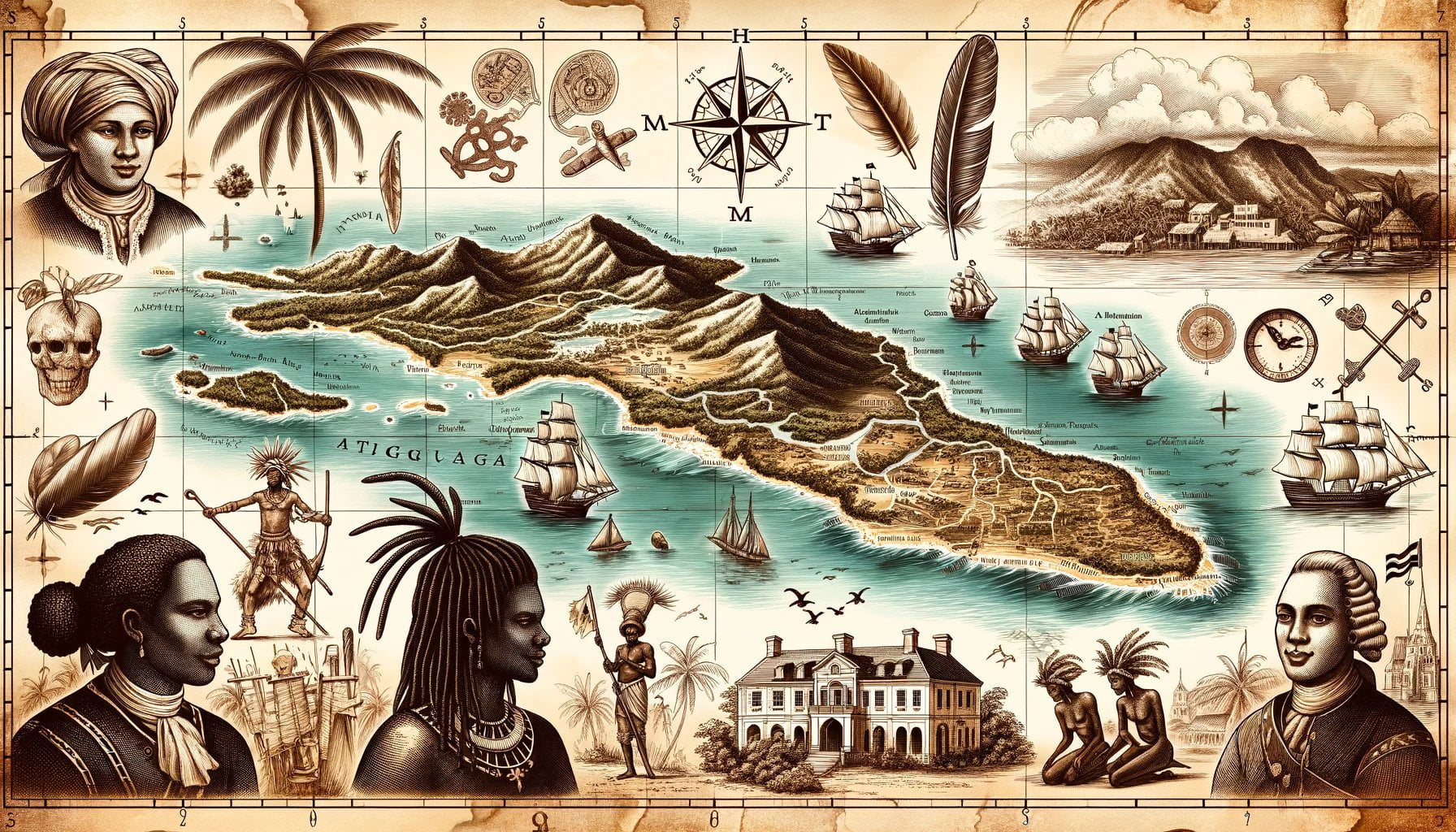
FAQ
Q1: What is the history of Antigua and Barbuda?
A1: Antigua and Barbuda were visited by Christopher Columbus in 1493 and later colonized by English settlers in 1632. The islands were inhabited by Amerindian societies before European colonization, and slavery was abolished in 1834. Antigua and Barbuda achieved independence from the United Kingdom on November 1, 1981. For more information, please refer to the sources provided.
Q2: What is the culture of Antigua and Barbuda?
A2: The culture of Antigua and Barbuda is a creole culture that emerged from the blending of Amerindian (Carib and Arawak), West African, and European (primarily British) cultural traditions. The influence of other Caribbean islands is also evident in this culture. Antiguans and Barbudans take pride in their rich and vibrant culture, which is reflected in aspects such as language, cuisine, architecture, religion, music, sporting interests, art, and festivals. To learn more about the culture and heritage of Antigua and Barbuda, please visit the sources provided.
Q3: Who are some notable people from Antigua and Barbuda?
A3: Some notable people from Antigua and Barbuda include Rick James (actor and politician/activist), Gaston Browne (Prime Minister), Baldwin Spencer (former Prime Minister), Sheila Roseau (women’s rights advocate), Sir Isaac Vivian Alexander Richards (former West Indian cricketer), Jamaica Kincaid (Antiguan-American novelist), Daniel Bailey (track and field athlete), Richie Richardson (cricket bowler), Winston Benjamin (cricket bowler), S.D. Jones (wrestler), and Peter Byers (footballer). For more information, please refer to the sources provided.
Q4: What is the cuisine of Antigua and Barbuda?
A4: The cuisine of Antigua and Barbuda features dishes such as fungie (a cornmeal dish similar to polenta), seasoned rice, lobster, saltfish, and ducana (sweet potato pudding or dumplings). Local confectioneries like peanut brittle, tamarind and raspberry stew, and sugarcake are also popular. The country’s cuisine highlights the fusion of different cultural influences. For more information, please refer to the sources provided.
Q5: What is the significance of Antigua and Barbuda’s independence?
A5: The independence of Antigua and Barbuda marked a significant milestone in the country’s history, as it gained self-governance and the ability to shape its own future. The struggle for independence in Antigua and Barbuda was influenced by the issue of economic stifling of Barbuda by the larger island of Antigua. The issue of Barbudan secession posed a challenge to achieving independence, but a compromise was reached, and Barbuda remained a part of Antigua and Barbuda. For more information, please refer to the sources provided.
